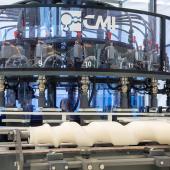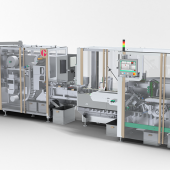The importance of materials
NORMATIVE FRAMEWORK Cosmetics and food: two apparently quite different sectors that, with changes to the legislation governing the use of packaging materials and the evaluation of components that can affect a product’s intrinsic properties, find themselves sharing numerous points of contact. With contributions from Giancarlo Melato of Cosmetica Italia*, an update on the most important European regulations governing products, packaging materials and machinery. By Riccardo Ceredi
In this case a preliminary statement is obligatory. The ultimate goal of regulations applying to the cosmetics and food sectors is consumer protection, which must be guaranteed by compliance with certain standards: from observation of restrictions on certain ingredients to the limited use of artificial coloring and preservatives, to supplying clear and usable information on the product label.
European legislation
As far as concerns cosmetics, the latest European law to go into effect is EC 1223/2009, governing countless issues, from product safety assessment to restrictions on the use of particular materials, and introducing a few innovations that reorganize provisions already laid out in directive 76/768.
As for food, EC 1935/2004 also focuses on factors such as materials used. Of the utmost importance to both sectors is the traceability of processes, materials and machinery used by the various suppliers (with the exception of end users), according to the principle of “one step back, one step forward”: in practice, every actor in the supply chain needs to know about what comes before and after them, taking responsibility for collecting compliance documentation and, at the same time, respecting good manufacturing practice.
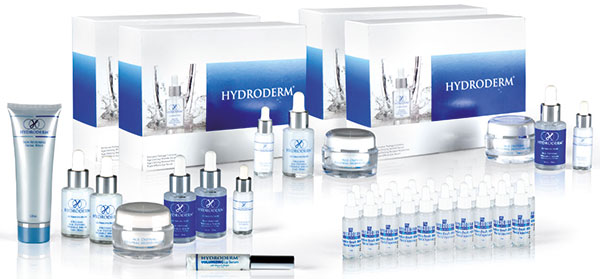
Product and packaging
Cosmetics. There are lists of substances that, as stipulated in article 14 of CE 1223/2009, cannot be used in the making of products. At the same time, there are lists of permitted coloring agents, preservatives and UV filters. Substances classified as CMR (carcinogenic, mutagenic and toxic for reproduction), according to appendix VI, part 3 of CE 1272/2008, constitute a specific case. The use of these substances is prohibited.
In any case, CMR substances can be used exceptionally in cosmetics products if, subsequent to their classification as CMRs, they are shown to comply with four conditions: in order to follow the safety provisions of CE 178/2002 of the European Parliament and Council, which establishes the general guidelines and requirements of food legislation, no adequate alternative substances are available, the application is performed for a particular use of the product category with a known exposure and, finally, they have been evaluated by the SCCS (Scientific Committee on Consumer Safety). Furthermore, the unintended presence of small amounts of a prohibited substance resulting from impurities of the natural or synthetic ingredients, from the manufacturing process, from storage or due to migration from the packaging (technically inevitable in spite of compliance with good manufacturing practice) is permitted as long as in compliance with article 3, which stipulates that only safe products can be put on the market. In practice, this opens a window for the presence of substances in theory prohibited, as long as the best practices for guaranteeing their containment have been carried out during production. On the other hand, the reduced presence of these substances (for example, a few heavy metals like nickel) can be exploited by manufacturers as a marketing strategy, much as products with no preservatives are emphasized in the food sector.
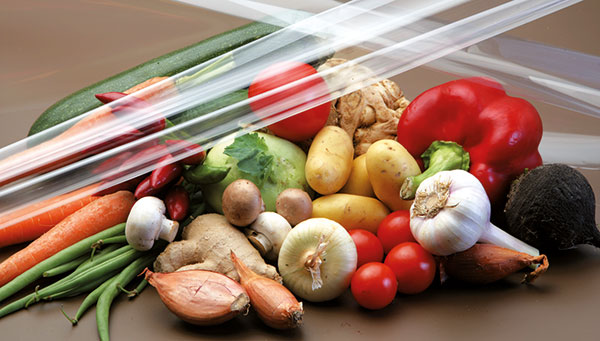
www.fraunhofer.de
Food sector. A lot of importance is given to materials, specifically those destined to come into contact with the product, among which plastic, rubber, aluminium and steel, whose use is governed by the above mentioned CE 1935/2004, which concerns both materials that enter directly into contact with the product (for example the packaging) and those subject to do so in an indirect manner. The latter specification is very significant and includes cases in which a transfer of material substances (and objects) to food products can occur under - the law reads - “normal or foreseeable” conditions of use. This implicates machine builders as much as customer concerns, meaning that it is necessary to pay particular attention not only to primary but also secondary packaging phases.
Indeed, starting from the premise that “0 migration” (the case in which a product is not even minimally altered by external agents) is a nearly impossible to reach condition, not only the materials used directly for wrapping the product have to be considered, but also secondary packaging and those machine parts that, in one way or another, may come into contact with the food, transferring undesired elements to the product. Consider, for example, the case of a filling machine with a dirty nozzle or, in the case of secondary packaging, a “contaminated” box in contact with a product with a porous packaging. Thus, while in the realm of food what is fundamental is research on packaging materials and, more generally, all materials that can communicate with (or simply transfer elements to) the food product during the industrial process, in cosmetics (which also strictly observes the above) a further point requires careful attention: the presence of potentially harmful substances in the products contained.
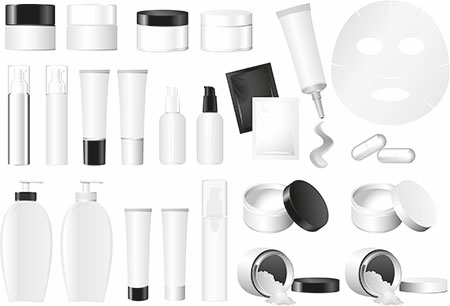 GMPs. Since the unintended presence of substances can influence a product’s safety, this eventuality must be minimized as much as possible, in accordance with good manufacturing practices.
GMPs. Since the unintended presence of substances can influence a product’s safety, this eventuality must be minimized as much as possible, in accordance with good manufacturing practices.
In the case of the cosmetics sector, attention is once more geared principally toward the product. ISO 22716 is the regulation that supplies guidelines for production, control, storage and shipping of cosmetics products and has been specifically designed for the cosmetics industry. It offers organizational advice and procedures for management of human, technical and administrative factors that influence product quality, to be followed from the moment a raw material/container enters the facility to when the product comes out, applying to all production, packaging, control, storage and shipping activities relating to a cosmetic product (with the consequent involvement of multiple departments within a concern).
In terms of building criteria for machinery involved in the packaging process, it’s essential that they be easy to clean and, if necessary, sanitize and maintain. Furthermore, the machine needs to be designed in such a way as to prevent contamination and assembled in such a way that the components can be protected from contaminants in the air (dust and humidity). Finally, the building material needs to be compatible with the products and cleaning and sanitizing agents. The position of the machine within the production process is also important: the machine should be placed in such a way that handling of the materials, mobile tools and personnel does not present risks to quality.
As far as concerns the food sector, CE 2023/2006 establishes the rules of good manufacturing practices for groups of materials and objects destined to come into contact with foods, and applies to all sectors and all phases of production, converting and distribution of materials and objects, excluding extraction and supply of raw materials. That means that each phase of processing must be carried out under observance of GMPs, except for the production of raw materials. At the same time, emphasis is placed on the importance of establishing a traceable and controlled supply chain. From here derive the concepts of selection of material and choice and qualifications of the supplier, important for managing the production process, which are related to preventive assessment, also on the part of the machine builders, suppliers able to satisfy such requests. Supply deals should be laid out in detailed contracts in which the responsibilities of supplier and converter are clearly stated.
Documentation: certificates of compliance and labels. In the food sector, CE 2023/2006 provides for establishment of a complete documentation system; it is in fact compulsory to supply 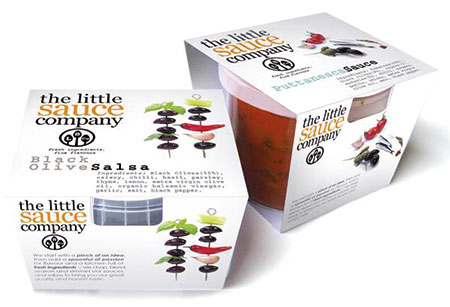 documentation to prove the sector operator’s compliance with the GMP system to the specifications of the law, through preparation of special registration and operational documents. GMP documentation also includes the Declaration of Compliance: materials and objects used must be accompanied by a written declaration stating their compliance with governing laws. Article 16 of CE 10/2004 in particular governs the declaration of compliance and establishes that it is always compulsory and should be made public and issued to all customers. It also establishes that the user (in this case the food enterprise) is held to receive and preserve it, in addition to assessing the technological suitability of the material acquired. This document also has contractual implications and must be drafted by one or more people from within the concern that have excellent knowledge of both governing legislation and the technical and production issues at play, as well as of the applications of the finished product. Also fundamental is knowledge of applicable law in foreign countries where the products will be exported: for example compliance with EU law for materials and objects in contact with foods is different from the compliance required by US law, established by the FDA (Food and Drug Administration).
documentation to prove the sector operator’s compliance with the GMP system to the specifications of the law, through preparation of special registration and operational documents. GMP documentation also includes the Declaration of Compliance: materials and objects used must be accompanied by a written declaration stating their compliance with governing laws. Article 16 of CE 10/2004 in particular governs the declaration of compliance and establishes that it is always compulsory and should be made public and issued to all customers. It also establishes that the user (in this case the food enterprise) is held to receive and preserve it, in addition to assessing the technological suitability of the material acquired. This document also has contractual implications and must be drafted by one or more people from within the concern that have excellent knowledge of both governing legislation and the technical and production issues at play, as well as of the applications of the finished product. Also fundamental is knowledge of applicable law in foreign countries where the products will be exported: for example compliance with EU law for materials and objects in contact with foods is different from the compliance required by US law, established by the FDA (Food and Drug Administration).
In cosmetics, aside from due procedures of good manufacturing, once again the emphasis is placed on product safety. CE 1223/2009 provides for collection of adequate informational documentation on each product and, before the product is put on the market, a specific assessment of the product’s safety by a qualified expert. This assessment must include a description of the cosmetic product that lays out a clearly readable report on safety and a description of the manufacturing process. Furthermore, appendix I of CE 1223/2009 lists elements that must be included in the cosmetic product safety report. In order to help concerns draft this document most effectively, the Commission published a decision on November 25th, 2013 with the guidelines describing in detail what needs to be included.
Firstly, the acceptable microbiological properties of raw materials (substances or mixtures) and the finished products must be defined. Moreover, cases relating to the presence of undesired substances in the product are to be taken into consideration, specifically “impurities” (when the undesired substance is found in the raw materials) and “traces” (when it is present in the finished product).
The decision also examines packaging materials, considering cases in which traces of prohibited substances are present. The relevant properties of packaging material are defined, with particular reference to its purity and stability characteristics.
Among the various purposes of this documentation, one is to prevent the potential for the packaging to release substances or otherwise prevent that these can lead to a deterioration of the product following contact.
|
Cosmetics and food products: how they are defined by law For “food product” is meant any substance or product converted, partially converted or non converted, to be ingested, that may be reasonably to be ingested, by humans, including beverages, chewing-gum and any substance, including water, intentionally incorporated in the foodstuffs during their production, preparation or treatment. For “cosmetics products” is meant any substance or mixture for application to the external part of the human body (epidermis, pilipherous system and hair, nails, lips, genitals) or on the teeth or on the mucose of the mouth for the exclusive or main purpose of cleaning, perfuming, modifying the appearance, protecting or maintaining the same in a good state or for the correction of bodily odours. |
* Speaker at the technical seminar organized by Ucima and Istituto Italiano Imballaggio, Wednesday, February 12th, 2014 at Villa Marchetti (Baggiovara, MO), with the objective of supplying an updated national, European and global regulatory framework for materials in contact with food, pharmaceutical products, cosmetics, etc.












